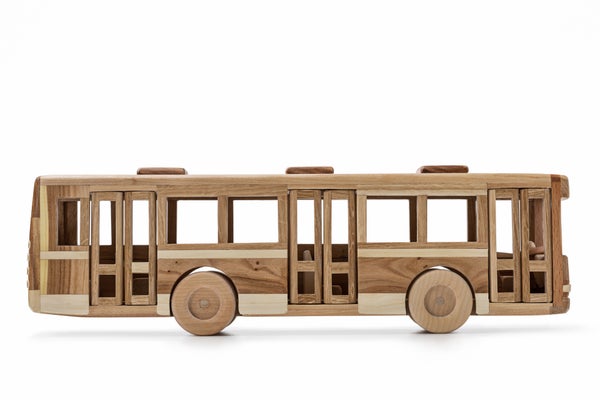This article was published in Scientific American’s former blog network and reflects the views of the author, not necessarily those of Scientific American
If you’re the type of person who believes that the UN is underpinned by a secret cabal of Agenda 21 types who poison your water, what follows is the stuff of nightmares. Then again, this is a blog which includes the word ‘scientific’, so it’s unlikely you’d be on this page anyway.
The other day I was shopping for a Lego set for my nephew, and while I had some strong urges to go all Star Wars, I wanted to see if there was anything a little less brand-tastic. I came across a Lego box called “Bus Stop” part of their “City” series. As I looked closer (see image above), I came to realize that this bus stop wasn’t just any bus stop, it actually seemed to be a toy-application in direct support of the UN Sustainable Development Goal 11:
“By 2030, provide access to safe, affordable, accessible and sustainable transport systems for all, improving road safety, notably by expanding public transport, with special attention to the needs of those in vulnerable situations, women, children, persons with disabilities and older persons."
On supporting science journalism
If you're enjoying this article, consider supporting our award-winning journalism by subscribing. By purchasing a subscription you are helping to ensure the future of impactful stories about the discoveries and ideas shaping our world today.

An actual train at the Frankfurt Christmas market, though unfortunately not electric. Credit: Tali Trigg
With this in mind, I further explored to see if there were any other trends in this direction, and came across (as noted in this blog’s title) a European Union project on informing children about the virtues of sustainable transport (or however you would like to see this endeavor).
It reminded me of a professor I once had, who asked the class how many love songs had been written about public transport vis-à-vis cars? The answer is: less, by an order of magnitude. And having worked in several countries on sustainable transport, one of the main barriers when supporting an increase in mobility options, is the importance of cars as status symbols.
You could argue that the ‘BAMBINI’ project is a good attempt then to inform children so that they can make less biased choices in the future, just like there are good early-education programs on recycling.
Ultimately, we will probably not hear too many crooners go on about a certain bus line, but if there is more widespread understanding that sustainable transport does not necessarily mean restricting car ownership, but rather providing more mobility options than just a car, we might be making progress, not just for an abstract UN goal target, but for “… women, children, persons with disabilities and older persons,” with access to mobility to enable living full lives.
